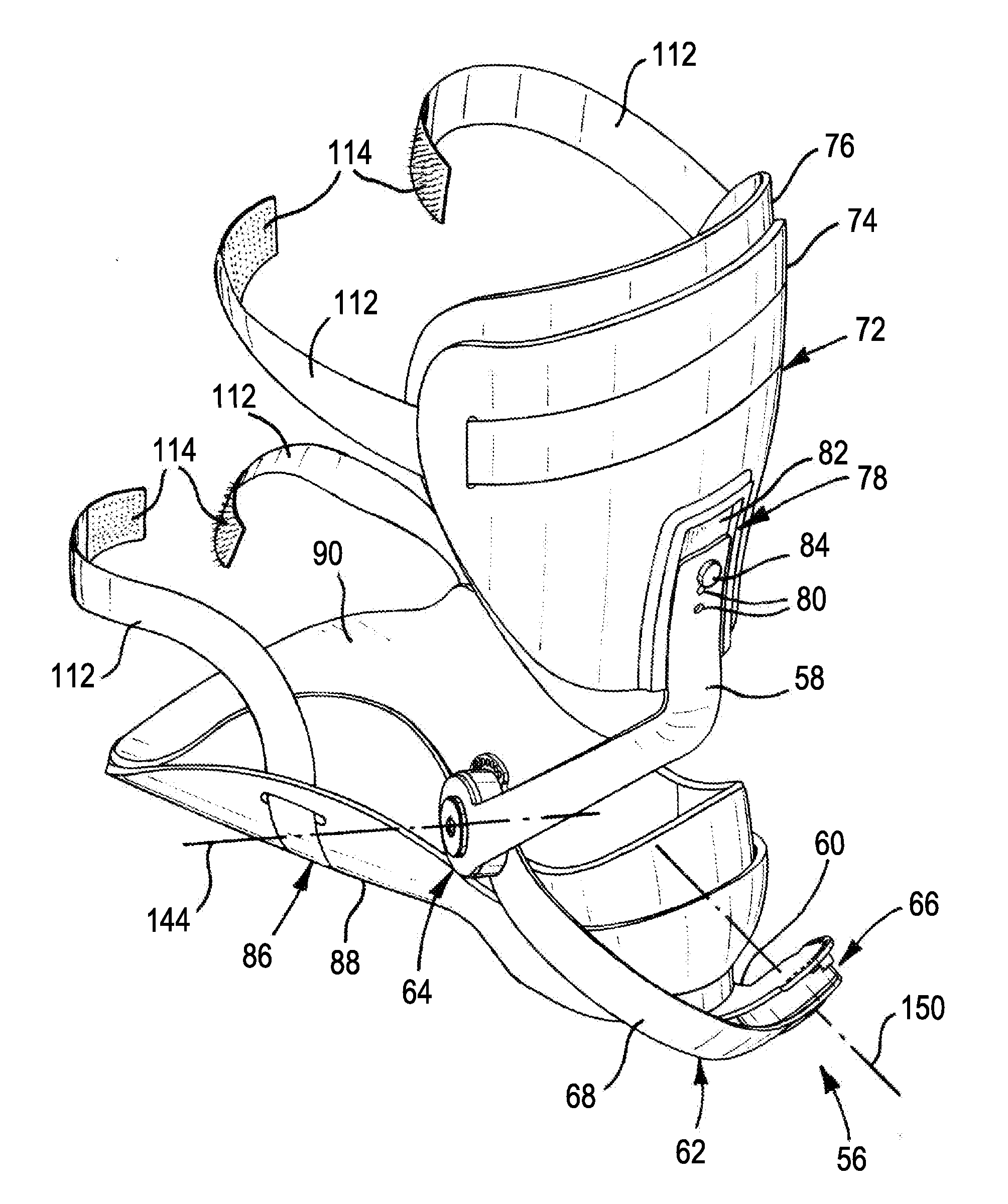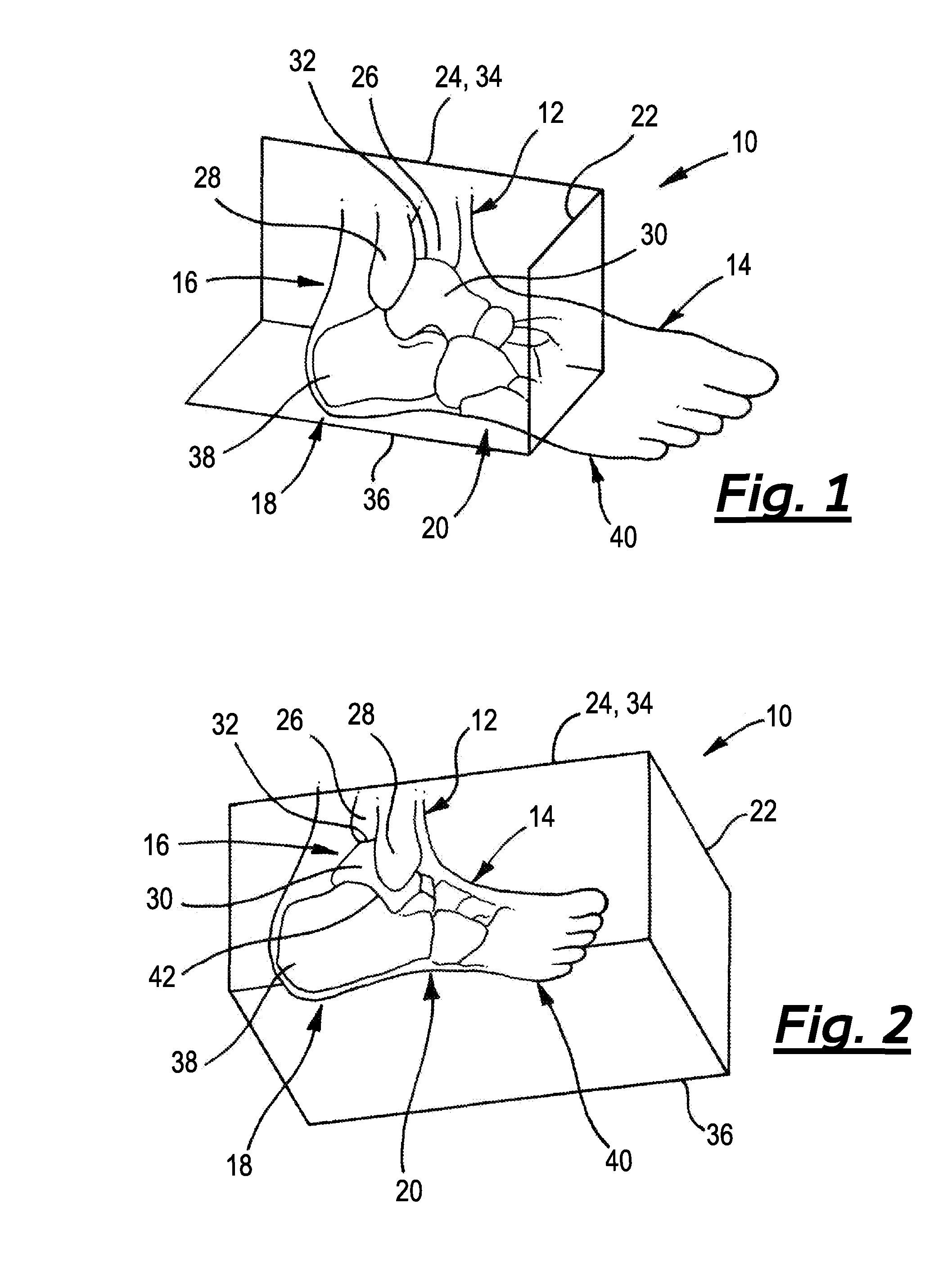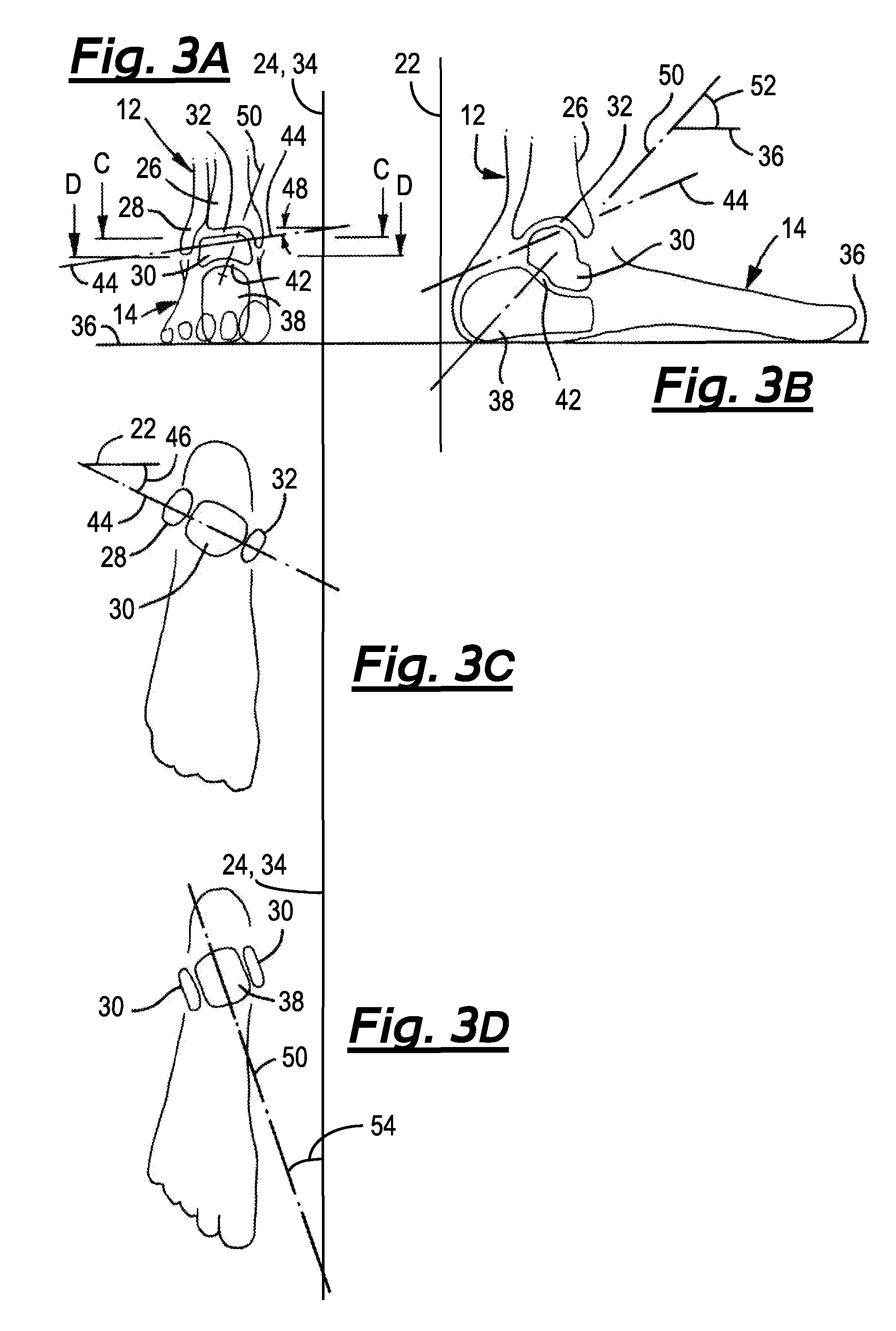Ankle foot orthopaedic devices
an orthopaedic device and hind foot technology, applied in the field of ankle foot orthopaedic devices, can solve the problems of complex anatomical correct motion of the hind foo
- Summary
- Abstract
- Description
- Claims
- Application Information
AI Technical Summary
Benefits of technology
Problems solved by technology
Method used
Image
Examples
first embodiment
[0130]FIGS. 13 and 14 show a third orthopaedic device 356 including a leg engaging item 72, a first connecting arm 58 for association with a leg engaging item 72, and a shoe engaging item 60 for association with a first connecting arm 58 and shoe 86. This device has just one adjuster 66 which corresponds to the first adjuster 66 of the The third orthopaedic device 356 thus permits adjustment movement only about the first device axis of rotation 150, which in use in the fitted condition corresponds to the sub-talar pivot axis 50. This device 356 could be used, for example, in cases where therapy involving only movement of the foot 14 about the sub-talar pivot axis 50 is required.
[0131]Similarly, in other embodiments not shown, a device of the invention could comprise just one adjuster corresponding to the second adjuster 64 of the first embodiment.
[0132]FIGS. 17 and 18 show a fourth orthopaedic device 556 including a leg engaging item 572, a first connecting arm 58 for association w...
embodiment 56
[0139]In this example, the device 756 is similar to the first device embodiment 56 except that the second connecting arm 68 extends outwardly laterally from the first adjuster 66 to the second adjuster 64, which is in a lateral position. In this position, advantageously, walking could be easier for the user as the first adjusters 64 of the two devices 756 on the two lower limbs do not dash or obstruct.
[0140]FIG. 22 shows a seventh orthopaedic device 856 including a leg engaging item 72, a first connecting arm 58 for association with a leg engaging item 72 and a second connecting arm 68, a second connecting arm 68 for association with a first connecting arm 58 and a shoe engaging item 60 (not shown in FIG. 22) and three spaced adjusters 64, 66, comprising a pair of second adjusters 64 which, in the adjustment condition, permits a second rotational adjustment movement around a second device axis of rotation 144 of the first connecting arm 58 relative to the second connecting arm 68 an...
PUM
 Login to View More
Login to View More Abstract
Description
Claims
Application Information
 Login to View More
Login to View More - R&D
- Intellectual Property
- Life Sciences
- Materials
- Tech Scout
- Unparalleled Data Quality
- Higher Quality Content
- 60% Fewer Hallucinations
Browse by: Latest US Patents, China's latest patents, Technical Efficacy Thesaurus, Application Domain, Technology Topic, Popular Technical Reports.
© 2025 PatSnap. All rights reserved.Legal|Privacy policy|Modern Slavery Act Transparency Statement|Sitemap|About US| Contact US: help@patsnap.com



